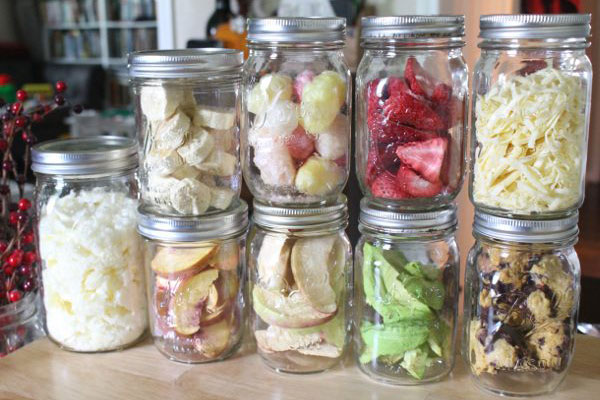Freeze-dried foods, as a category of healthy and nutritious edibles, have been increasingly embraced by consumers. But what foods can we freeze-dry in our daily lives, and what makes these freeze-dried foods special? Let’s delve into this question together.
Freeze-Dried Fruits: Nutritious and Delicious
Freeze-dried fruits are certainly among the top recommendations for freeze-dried foods. Not only are they delicious, but they also retain most of the nutritional value of fresh fruits, allowing you to enjoy the varied tastes of different seasons freely.
Here are some freeze-dried fruits worth recommending:
- Apples, pears, and bananas: These classic fruits are delicious and perfect for on-the-go snacking. Freeze-dried apples and pears have a unique sweetness, while freeze-dried bananas have a rich, creamy flavor.
- Berries (strawberries and blueberries): Known for their antioxidant properties, freeze-dried strawberries and blueberries perfectly preserve these nutrients. Strawberries offer a rich, sweet taste, whereas blueberries have a delightful sour-sweet flavor. Both can be used to make smoothies and yogurts.
- Mangoes: Freeze-dried mangoes retain the sweet flavor of fresh mangoes, with a unique texture and feel. They are crisp and light, slightly sweeter than fresh mangoes, and dissolve instantly in your mouth, offering a different experience from the juicy texture of fresh mangoes.
Freeze-Dried Vegetables
Freeze-drying is undoubtedly the best way to preserve vegetables. Freeze-dried vegetables can be stored for a long time and rehydrated quickly to return to a state close to that of fresh ingredients. Let’s look at some common freeze-dried vegetables:
- Peas: Rich in protein, vitamin C, and vitamin K, peas lose almost no nutrients during the freeze-drying process and can be quickly rehydrated to restore the taste and nutrients of fresh peas, allowing for quick cooking.
- Corn: Freeze-dried corn retains its original sweetness and can be eaten as a snack or added to salads and soups for extra sweetness and texture.
- Carrots: Carrots are rich in beta-carotene, and freeze-drying preserves their nutrients, aiding in the supply of vitamin A. They can be snacked on or added to stews and soups, quickly returning to the taste of fresh carrots upon rehydration.
- Potatoes: A great source of carbohydrates and potassium, freeze-dried potatoes retain these nutrients and can be used to quickly prepare side dishes or consumed directly as mashed potatoes.
Freeze-Dried Meats
- Beef: Freeze-dried beef retains important nutrients like high protein content. It can be quickly rehydrated, restoring the nutrition and taste of fresh beef, suitable for preparing stews or fast food, and also as outdoor activity food.
- Chicken: The protein, vitamins, and minerals in freeze-dried chicken are well preserved, and even after long-term storage, freeze-dried chicken remains nutritionally rich. It can be used in salads, soups, and stir-fries upon rehydration.
- Pork: Freeze-dried pork can be used as an ingredient in various dishes, whether stewed, stir-fried, or in soups, blending in easily. After rehydration, freeze-dried pork still has a good texture, close to that of original pork.
Freeze-Dried Dairy Products
- Milk: Freeze-dried milk excellently preserves the proteins and trace elements in milk. Even after long-term storage, freeze-dried milk remains a highly nutritious food. Additionally, it’s lightweight, compact, and dissolves quickly in water, making it perfect for travel. We’ve described this in detail in the article:Freeze-Dried Milk:
A Nutritious And Healthy New Choice
In conclusion, whether it’s freeze-dried fruits, vegetables, meats, or dairy products, the freeze-drying process extends shelf life while perfectly preserving the nutrients in food. Which type of freeze-dried food do you prefer? Let’s enjoy the pleasures of freeze-dried foods together.






